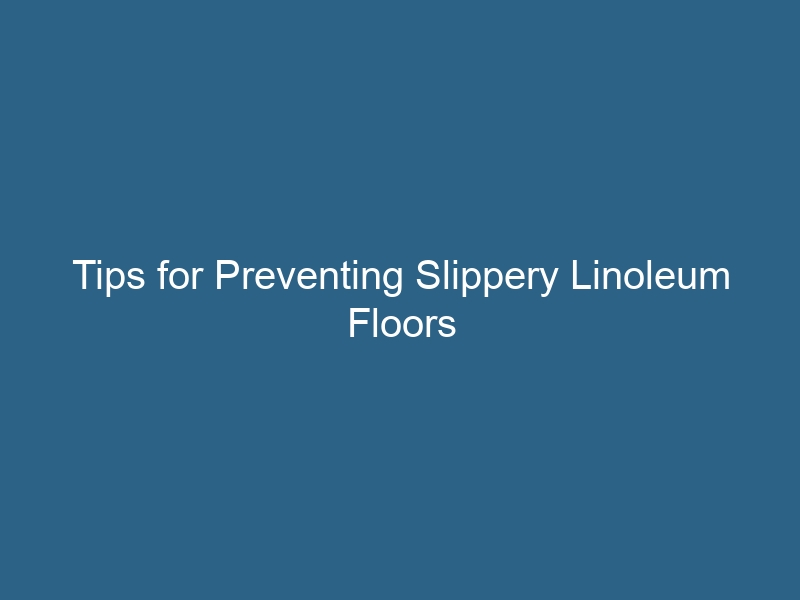Quck answer
Here are some simple steps to make your linoleum floor less slippery:
1. Clean the floor thoroughly with a mild detergent to remove any dirt or residue that may contribute to slipperiness.
2. Apply a non-slip floor treatment product specifically designed for linoleum floors. These products create a textured surface that provides better traction.
3. Use non-slip rugs or mats in areas prone to getting wet, such as near sinks or showers.
4. Avoid using wax or polish on the floor, as they can make it more slippery.
5. Place rubber pads or grips under furniture legs to prevent them from sliding.
6. Promptly clean up any spills or wet spots to prevent accidents.
By following these steps, you can significantly reduce the slipperiness of your linoleum floor and create a safer environment.
Slippery floors can be a dangerous hazard in your home, leading to falls and injuries. However, there are ways to address this issue and make your linoleum floor safer.
If you have a slippery vinyl plank or linoleum floor, there are several methods to reduce the risk of slips and spills.
Applying Non-Slip Treatment to Linoleum
To address the slipperiness of your linoleum floor, you can increase its friction coefficient. There are a few ways to achieve this.
An effective solution is to use Skid Safe water-based sealer, a modified resin that enhances friction resistance. This product works well with all types of flooring, including linoleum. It is easy to apply and may require multiple coats to achieve the desired effect. Additionally, it provides stain and crack protection for your flooring.
Another option is to use a slip-resistant film that can be applied to the floor using a liquid added to your mopping solution. This film will add resistance to the slippery linoleum surface and should be applied regularly to high traffic areas.
You can also try using magnesium powder mixed with water and mopped onto the floor. This will quickly reduce the slipperiness of the surface. Once the floor dries, you can use grip powder, commonly used in rock climbing, to further increase the floor’s slip resistance.
Cleaning Your Linoleum Floor
Maintaining a clean linoleum floor is crucial in preventing slips and falls.
Dust, talcum powder spills, rainwater, floor polish, and wax can all contribute to a slippery surface. To avoid this, make sure to sweep the floor daily and remove any debris or spills promptly.
Avoid using wax-based cleaning products, as they can create a slippery surface. Instead, clean your linoleum floor with a simple solution of warm water and mild dish soap to prevent the buildup of slippery cleaning residue.
In areas like kitchens and garages, it is recommended to use a commercial or homemade degreaser once a month or every quarter to eliminate slippery areas. You can also try sprinkling a mixture of baking soda and lemon over the linoleum, then mopping it up with warm water and dish soap to degrease the floor.
Choosing Non-Slip Linoleum Flooring
If you are in the market for linoleum flooring for entry hallways, kitchens, or bathrooms, consider opting for a non-slip variety. These rooms are more prone to wet patches from outdoor weather or spills during cleaning.
Non-skid linoleum is designed to increase the friction between the floor and your feet, making it a safer option. This is achieved by incorporating anti-slip particles within the wear layer of the flooring material.


